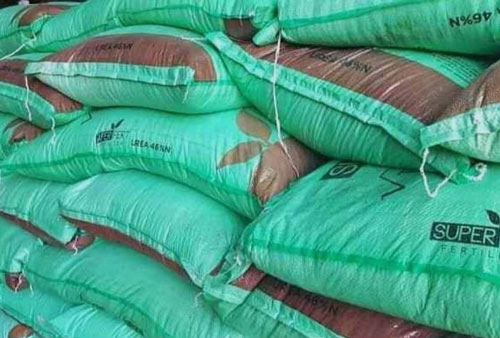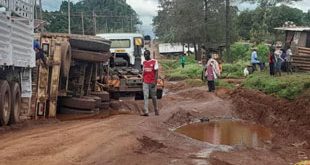
Zimbabwe is taking advantage of a technology used in South Africa and China, to develop ammonium-based fertilizers from coal
SPECIAL FEATURE | BIRD AGENCY | A Zimbabwean government-owned entity, Verify Engineering, is preparing to use locally available coal to develop ammonia-based fertilisers as the country ramps up agricultural productivity.
“We are going to employ (a) gasification process for us to come up with ammonium-based fertilisers. The processing technologies and designs are already in place,” said the company’s board chairperson, Edgar Kamusoko.
The Southern African country has a high demand for fertiliser but local production can only meet 10% of demand. The remaining 90% needs to be imported – which is a problem for farmers in a country that faces foreign currency shortages and a wildly fluctuating exchange rate.
The innovation is expected to help by producing a significant amount of top-dressing fertiliser for farmers and satisfying the country’s fertiliser demand.
Verify Engineering is a significant producer of acetylene, medical oxygen, industrial gases, and nitrogen gases and supplies customers in the healthcare, petrochemical refining, manufacturing, beverages, food, fibre-optics, steel manufacturing, chemicals and water treatment industries.
The firm was established in April 2005 with the support of the Higher and Tertiary Education, Innovation, Science and Technology Development Ministry and launched a strategic business unit in 2021.
According to the Zimbabwe Fertiliser Manufacturers Association, the country’s fertiliser industry requires about US$135 million annually to operate at 60% capacity or more, to meet current demand.
Coal is fossilised vegetation, containing nutrients that are essentially the same as in plants, only more concentrated and locked in.
Coal is also high in carbon, a source of energy for microorganisms that permanently enrich soil nutrition, including depleted, damaged, underused and unused soils.
The nutrients in coal must be processed and activated in order for plants to absorb them as fertiliser. Coal-to-fertiliser technology is also referred to as nutrient activation technology.
Some countries with abundant coal resources, like South Africa and China, already utilise gasification methods to manufacture fertilisers.
Gasification turns organic or fossil-based carbonaceous materials into a very hot (up to 1800°C) synthesis gas, or syngas, without combustion, which is composed of carbon monoxide, hydrogen and carbon dioxide, as well as small amounts of other gases and particles, with a controlled amount of oxygen.
The process is accomplished by mixing pulverised coal with an oxidant, usually steam or oxygen.
The whole process, which starts with crushing and filtering, mixing it with other substances such as salt and essential nutrients maturing, makes the hard fossil-based carbonaceous materials change into a simple form so that plants can more easily absorb them.
The granulation process also makes the fertiliser easier to use when the fertilising process has to be done.
There are more than 150 coal-to-chemical facilities in China, mostly converting coal to coke, fertiliser or oleo-chemicals. According to a report from the Wilson Centre, their industry has grown since 2013, as local governments pushed the technology to meet the increasing demand for fertilisers and natural gas.
Verify Engineering has developed a similar technology to allow the country to utilise its abundant coal reserves as feedstock to produce ammonium-based fertilisers of the highest international quality standards in a clean manner.
Kamusoko, expects their technology to close the fertiliser gap by 2026.
“So we will establish a pilot plant, which in the next three years, will start closing that gap,” he said.
“We are ready to establish the plant, and we are only waiting for final funding from the government. In the next few years, we should be able to set up that plant which will produce substantial ammonium-based fertilisers for the agricultural sector,” he added.
Justice Marumbi, a local commercial maize and tobacco farmer, commended the idea and said owning fertiliser-producing plants in the country will help them grow as an agricultural sector.
“This is good news to me. Having our fertiliser-producing plants will make our farming activities easier.
“There will be no need to go outside Zimbawe and look for what is being locally manufactured. That’s a great idea, I hope they are going to kickstart the project soon,” he said.
“Buying local is cheaper than importing, and this shows that there is hope for our ailing Zimbabwean economy,” he added.
Another commercial maize and soybeans farmer, Gift Chimhuka, said that it is his wish for the project to be implemented soon to eliminate transport and import costs, which are the main factors.
“The innovation shows that Zimbabwe is taking seriously the issue of food security. We will no longer need to import expensive fertilisers from our neighbouring countries.
“If we start to own our fertiliser-producing plants, everyone will benefit because jobs will be created for our graduates.
According to a 2022 report presented by Lands, Agriculture, Fisheries, Water, and Rural Development Minister Anxious Masuka, high fertiliser costs are affecting productivity within the agricultural sector. Therefore, the establishment of fertiliser manufacturing plants in the country will give the farmers a sigh of relief.
“The cost of fertiliser presented the biggest constraint to increasing production,” partly reads the report.
Zimbwabean economist Vince Musewe said establishing a local coal-to-fertiliser manufacturing plant is an excellent step towards harnessing agricultural activities in the country as this will reduce the costs of fertiliser inputs for farmers.
“The local production of fertilisers is beneficial to farmers because it lowers the overall costs of fertiliser inputs,” he said.
*****
SOURCE; Takudzwa Changadeya, bird story agency
 The Independent Uganda: You get the Truth we Pay the Price
The Independent Uganda: You get the Truth we Pay the Price


